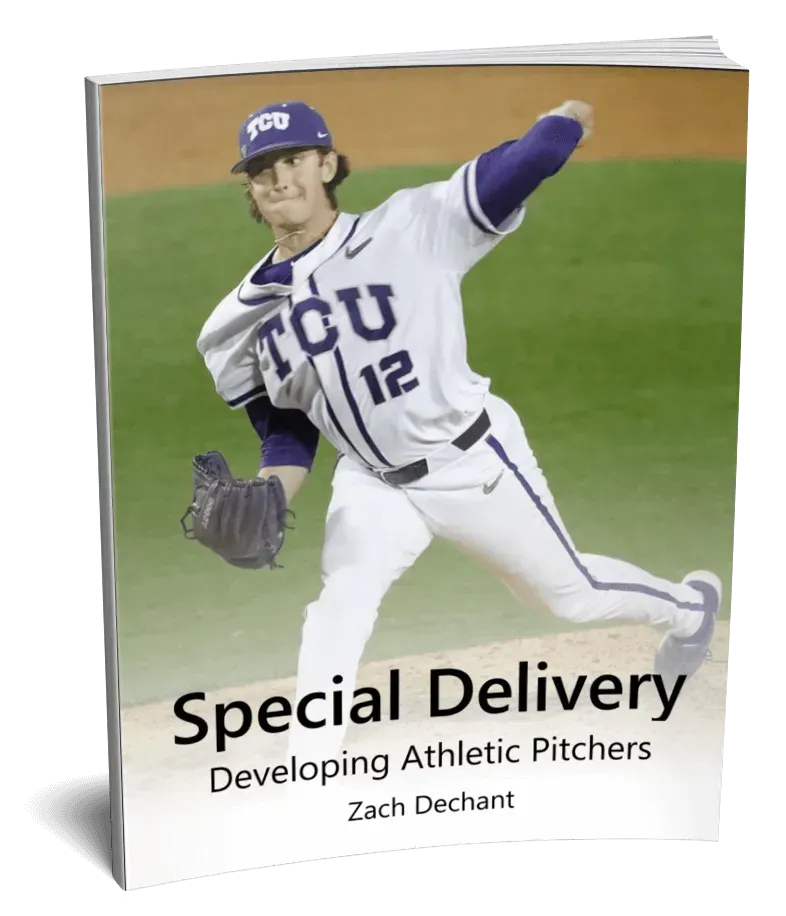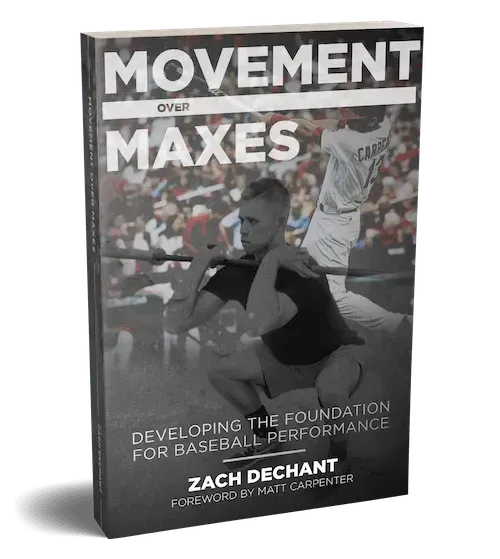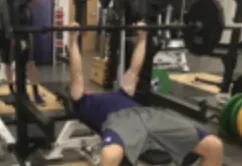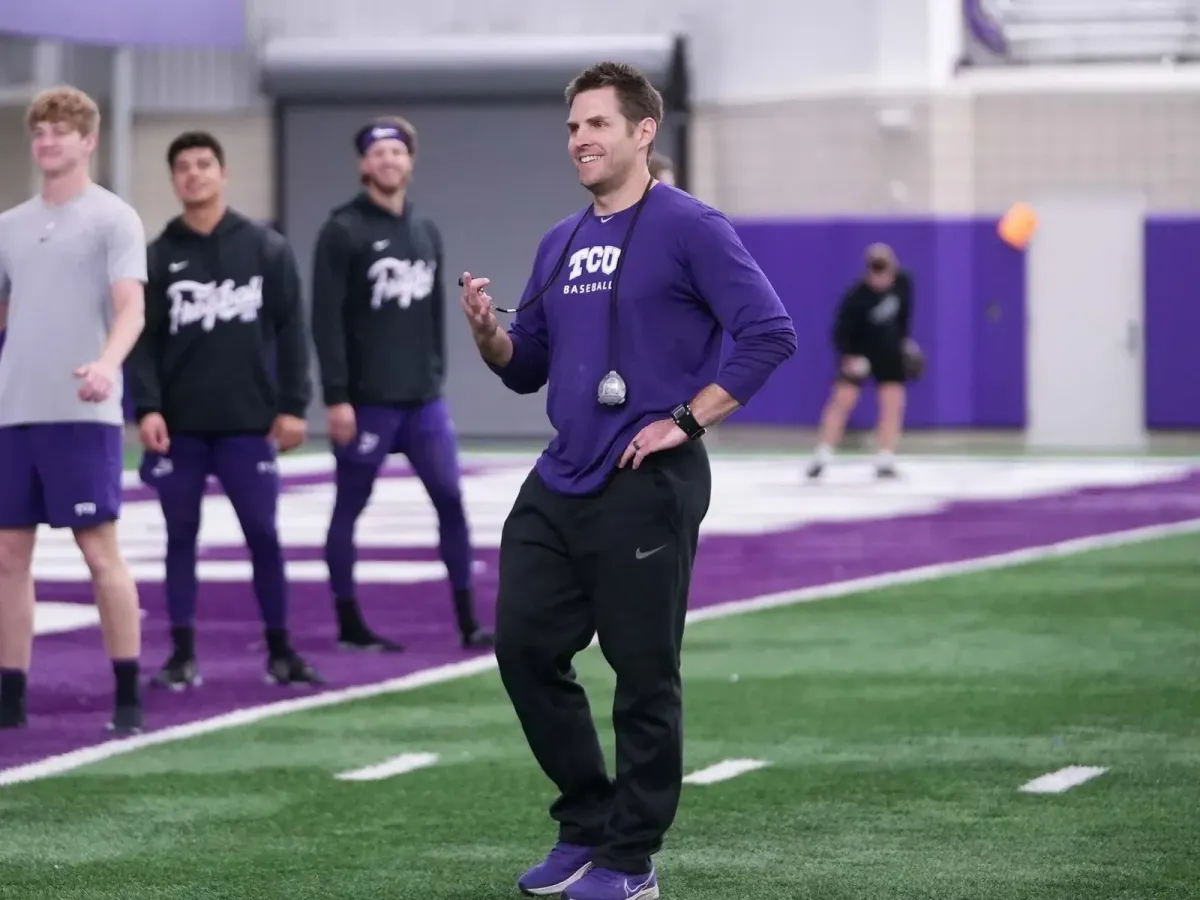Free Pitcher's Training eBook Reveals
How To Develop Athletic Pitchers And Train Them With An
Emphasis On Speed, Power & Movement

...and they must be treated as such. The act of pitching is an explosive, total-body movement.
There is nothing slow about it. Thus, our
overarching goal in training pitchers is to make
them fast, powerful, and explosive -- so that's how
they should train.
However, several factors separate pitchers from the rest of the team and these should be taken into account when developing a training program.
In this PDF eBook, you're getting the complete, individualized strength & conditioning approach utilized to assess, develop and train athletic pitchers that move explosively.
Movement Over Maxes
Developing The Foundation for Baseball Performance

"If you want to improve your program and give your athletes a winning edge, this book is a must!"
Movement Over Maxes is a Foundational Program that serves as the starting point for any athlete. It functions as a guide for all coaches to begin to understand and implement basic movement patterns with a long-term development approach.
This was created for the coach who wears every hat for their program... The coach who mows the grass, drags the infield, handles the equipment, AND trains the athletes! This is for the coach who devotes their life to not only creating better baseball players, but growing boys into men through the sport.

The APRE Good & Bad
The APRE is an great method to build strength in novice/intermediate athletes or re-build lost strength quickly. I use the APRE at various times throughout an athletes duration on campus. One of my friends and former classmates, Bryan Mann, had a good article on the APRE in this past month's edition of Training & Conditioning magazine. If you're unfamiliar with the method or need a refresher on the rep scheme you can find Bryan's article here. In Control. There are several advantages and disadvantages to using the APRE method and here are some of my experiences both good and bad.
Advantages:
Ease of implementation
It's hard to argue with the ease that the APRE can be implemented. The rep schemes, as well as adjustments are all laid out for the coach and the athlete. It's a completely...if this...do this program, which can be a great time saver for sport coaches who have the added responsibility of developing their athletes off the field as well.
Great to re-build lost strength quickly
I believe one of the best times for using the APRE is for following a period of detraining. The APRE is a method system for regaining lost strength. As a college strength coach, we face athletes leaving campus for the entire summer with no real knowledge of whether they completed all of their training or not. Baseball athletes who play summer ball in collegiate leagues and often have relatively little access to facilities for strength training due to travel, small towns, money, etc. Yes, where there's a will there's a way, but more times than not, the will is smaller than we want to believe. I have always utilized the APRE in the first 4-6 weeks upon returning to campus to regain lost strength. That is where I have found it to be an extremely effective method.
Auto-regulates to current readiness
We all know each athlete is an individual that respond to stressors differently. We can’t account for each of these stressors in all of our athletes all the time. Athletes aren’t at the best every day. We also know that athletes don’t adapt at the same speed. Training around their individual readiness levels can be an important factor in the training process. The APRE method adapts and adjusts to what the athlete is capable of that day and nothing more. 90% isn’t always 90%. We know athletes who are under large amounts of outside stress aren’t at a high level of readiness and being able to adjust to that daily is a great advantage in training.
Does not require a max
One of the biggest benefits to the APRE method is not having to test athletes for a max to begin a training cycle. Finding a max, with those who have become untrained, can become a recipe for disaster. A ballpark number in the APRE works absolutely fine as the method constantly adapts to the level of the athlete. This is one reason that makes it such an optimal method for returning de-trained athletes.
Disadvantages:
Sets to failure and technique
With heavier compound exercises, especially for the lower body, I’m generally not a fan of working to failure. Upper body movements don’t usually cause as big an issue. Athletes will compensate technique when it comes to working to failure. In the squat, depth is a common sacrifice in the quest for more reps. Also, as failure gets near, athletes obviously begin to get sloppy with their movement. Knees collapse, depth suffers, backs round. This isn’t something we encourage with movements like squats, and deadlifts. The spine can take a beating when fatigue sets in on these larger movements.
Stalling and plateaus
An issue that I’ve seen firsthand is plateaus occur quickly with athletes that have used the APRE previously. Like everything, the human body will adapt to stressors applied and the APRE is no different. An athletes first or second engagement with the method can produce great results. Each attempt thereafter progress slows down and eventually stalls. This is a downfall of any constant method. Being that the APRE has very little variation adaptation can set in rather quickly especially for more trained athletes.
Volume
When you look at the standard APRE there are truly only two total work sets and athletes are probably doing between 10-15 reps for the entire movement. Depending upon the arrangement of the microcycle, athletes may only have this one stimulus in the course of the week. Such a low volume of total work may hinder gains in strength, and size. Adjusting either the microcycle or adding work sets can assist in this area. To combat this issue, I have used the APRE on a more frequent basis throughout the weekly cycle. Another option I've utilized is adding in 2-4 work sets at a lower intensity following the final "true set."
CONNECT WITH ZACH ON TWITTER
ABOUT ZACH DECHANT
Zach has been in place since 2008 at TCU and is the current Assistant Athletic Director of Human Performance. He oversees the development of Baseball. Alongside those priorities he also handles the development and implementation of the TCU Sports Performance Internship Program that has been in place for over 15 years. Over that time the internship program has encompassed 40+ semesters and 250+ intern coaches that have moved on to all levels of professional, collegiate, high school, and private strength and conditioning.
During baseball off-seasons, Coach Dechant trains a group of 30+ current MLB / MiLB Frogs. The pro Frogs spend 4 months back on campus training for the upcoming season...


©️ 2024
